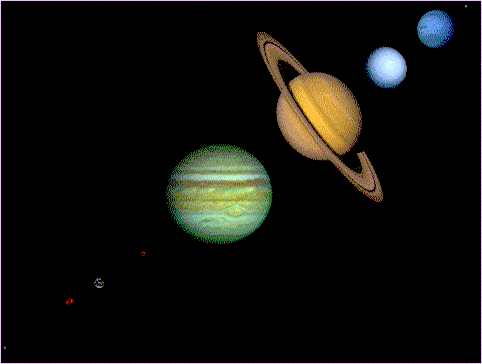
|
This picture below shows how big (and little!) the nine planets are in relation to each other. Can you see tiny Mercury in the very bottom, left-hand corner? Pluto is the teeny-tiny planet in the very top, right-hand corner! |

|
These nine planets are grouped in many different ways. Two easy groupings are composition (what they are made up of) and size. |
|
COMPOSITION ROCKY PLANETS (Mercury - Venus - Earth - Mars - Pluto) The rocky planets are mostly made up of rock and metal. These planets are very heavy and move slowly. They also do not have rings and very few moons. GAS PLANETS (Jupiter - Saturn - Uranus - Neptune) The gas planets are mostly made up of gases (hydrogen and helium). These planets are light for their sizes (just like a big air balloon) and move quickly. They have rings and lots of moons. |
|
SIZE SMALL PLANETS (Mercury - Venus - Earth - Mars - Pluto) The small planets have diameters less than 13000 km across. Mercury and Pluto are sometimes referred to as lesser planets because they are so tiny. GIANT PLANETS (Jupiter - Saturn - Uranus - Neptune) The giant planets have diameters greater than 48000 km. The giant planets are sometimes also referred to as gas giants. |
|
|
|
|
to explore the 9 Planets! |